A sharpening stone’s grit determines its abrasiveness‚ ranging from coarse to fine. Lower grits (100-400) reshape and sharpen dull blades‚ while medium grits (1000-3000) refine edges. Fine grits (4000-12000+) polish for precision.
Sharpening stones‚ also known as whetstones‚ are essential tools for maintaining and sharpening the edges of knives and other blades. These stones have been used for centuries and are favored by professionals and home users alike for their effectiveness. Available in various materials‚ such as Arkansas stones and water stones‚ they are designed to reshape and refine blade edges. The stone’s surface is graded by grit‚ which determines its abrasiveness. Lower grits are coarser‚ ideal for reshaping dull or damaged edges‚ while higher grits are finer‚ used for polishing and achieving a razor-sharp finish. Properly used‚ sharpening stones can restore and maintain the performance of any blade‚ making them indispensable in kitchens and workshops.
What is Grit in Sharpening Stones?
Grit refers to the particle size of the abrasive material on a sharpening stone. It is measured by a numerical value‚ with lower numbers indicating larger‚ coarser particles and higher numbers signifying finer particles. Coarse grits‚ such as 100-400‚ are used for aggressive sharpening‚ removing metal quickly to restore a dull edge. Medium grits‚ like 1000-3000‚ balance sharpening and polishing‚ refining the edge. Fine grits‚ ranging from 4000 to 12000+‚ are used for final polishing‚ creating a sharp‚ mirror-like finish. Understanding grit is crucial as it directly affects the sharpening process‚ determining how much metal is removed and the edge’s final sharpness. Proper grit selection ensures efficient and effective blade maintenance.
Understanding the Importance of Grit
Grit plays a pivotal role in sharpening‚ as it determines the effectiveness of each stage. Coarse grits rapidly remove metal‚ correcting blade shape and addressing dullness. Medium grits refine edges‚ balancing sharpness and durability. Fine grits polish‚ enhancing precision and smoothness. Using the right grit sequence ensures blades are sharpened efficiently‚ preventing over-sharpening or under-sharpening. Proper grit selection also extends tool life by avoiding excessive wear. Misusing grit can lead to poor results‚ such as uneven edges or reduced blade longevity. Thus‚ understanding grit is essential for achieving optimal sharpness and maintaining tool integrity. Mastery of grit progression is key to successful sharpening‚ making it a fundamental concept for both novices and experienced sharpeners alike.

Different Grit Levels in Sharpening Stones
Sharpening stones are categorized by grit‚ ranging from coarse to fine. Coarse grits (100-400) handle dull blades‚ medium grits (1000-3000) refine edges‚ and fine grits (4000-12000+) polish for sharpness.
Low Grit (Coarse) Stones: Purpose and Use
Low grit‚ or coarse‚ sharpening stones (100-400) are essential for restoring dull or damaged blades. They quickly remove metal‚ shaping and defining the edge. Ideal for initial sharpening‚ these stones repair chips and straighten edges efficiently. Coarse grits are perfect for heavy-duty tasks‚ such as reprofiling blades or correcting angles. They set the foundation for further refinement‚ making them a crucial first step in the sharpening process. Regular use ensures tools remain functional and ready for precise tasks. Proper technique with coarse stones prevents premature wear‚ ensuring longevity of both the blade and the stone.
Medium Grit Stones: Balancing Sharpening and Polishing
Medium grit stones (1000-3000) bridge the gap between sharpening and polishing. They refine the edge created by coarse grits‚ removing minor scratches while enhancing sharpness. These stones are ideal for maintaining blades‚ as they strike a balance between edge refinement and polishing. After using a coarse stone‚ medium grit stones prepare the blade for finer polishing. They are versatile‚ suitable for both sharpening and light touch-ups. Regular use of medium grit stones ensures blades remain sharp and functional without unnecessary wear. This grit range is perfect for everyday maintenance‚ keeping knives in optimal condition for consistent performance. They are a cornerstone in achieving and preserving a sharp‚ reliable edge.
High Grit (Fine) Stones: Final Polishing and Edge Refinement
Fine grit stones (4000-12000+) are used for the final stages of sharpening‚ focusing on polishing and refining the edge. They remove microscopic scratches‚ leaving a razor-sharp‚ mirror-like finish. These stones are essential for achieving professional-level sharpness‚ ideal for precision cutting tools. Fine grits enhance edge retention and smoothness‚ making them perfect for high-end knives and precision instruments. They require light pressure and careful technique to avoid over-polishing. Regular use ensures blades maintain their sharpness and durability. Fine grit stones are the culmination of the sharpening process‚ delivering unparalleled edge refinement for optimal performance in culinary‚ woodworking‚ and other precision tasks. They are a must for those seeking the sharpest‚ most polished blades.

Grit Progression for Effective Sharpening
Start with coarse grit to shape the blade‚ then progress to medium grit for refining‚ and finish with fine grit for polishing to achieve a razor-sharp edge.
Starting with Coarse Grit for Initial Sharpening
Coarse grit stones‚ typically 100-400‚ are essential for initial sharpening. They effectively remove metal‚ quickly restoring a dull blade’s edge. Use light pressure‚ moving the knife in consistent strokes to establish the bevel. This step corrects major imperfections and sets the foundation for further refinement. Avoid applying too much pressure to prevent uneven wear. Regular use ensures the blade’s shape and sharpness are maintained. Transitioning from coarse to finer grits progressively polishes the edge‚ enhancing sharpness and longevity. Proper technique here maximizes efficiency and prepares the blade for medium and fine grit finishing.
Transitioning to Medium Grit for Edge Development
After establishing the edge with coarse grit‚ medium grit stones (1000-3000) refine the blade‚ removing smaller imperfections. This step polishes the edge‚ enhancing sharpness and clarity. Use consistent angles and lighter pressure to maintain control. Medium grit bridges the gap between shaping and final polishing‚ ensuring a balanced edge. Proper technique here prepares the blade for fine grit finishing‚ achieving a razor-sharp result. Regular use of medium grit maintains edge quality and extends blade longevity‚ making it essential for both maintenance and sharpening routines. This step is vital for developing a precise‚ durable edge suitable for everyday use.
Final Polishing with Fine Grit for Razor-Sharp Edges
Fine grit stones (4000-12000+) are used for the final polishing stage‚ creating a razor-sharp edge. These stones refine the blade’s edge‚ removing minor scratches and imperfections.Light pressure and precise angle control are crucial to avoid over-polishing. Fine grit stones enhance the knife’s sharpness and edge retention‚ making them ideal for professional-level results. Regular polishing with fine grit maintains the blade’s precision and extends its lifespan. This step is essential for achieving a mirror-like finish and ensuring optimal performance for culinary‚ outdoor‚ or everyday use. Fine grit stones are a must for anyone seeking unparalleled sharpness and edge refinement.
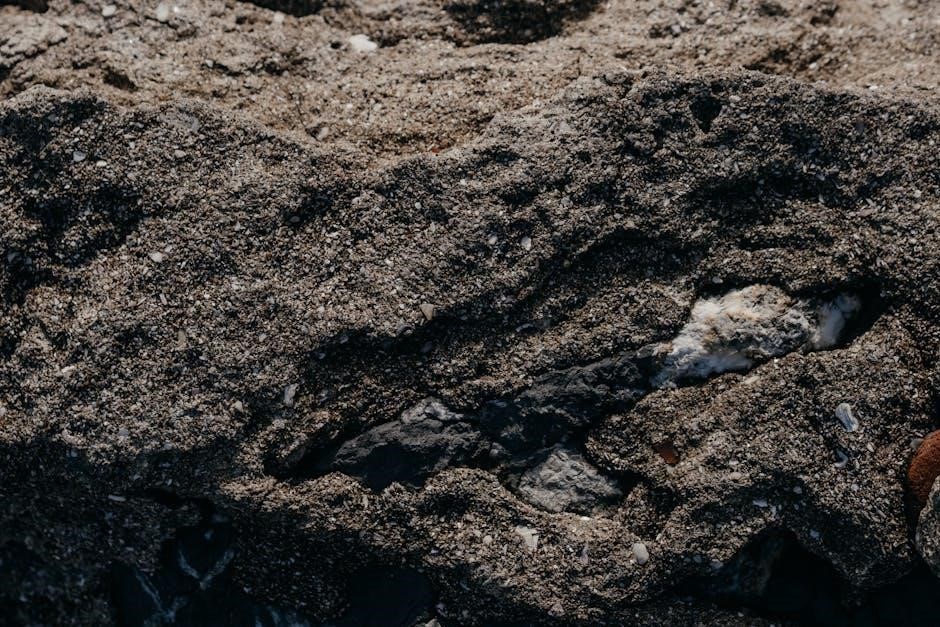
Choosing the Right Grit for Your Needs
Selecting the appropriate grit depends on the knife’s condition and desired sharpness. Coarse grits (100-400) are for dull blades‚ medium grits (1000-3000) for maintenance‚ and fine grits (4000-12000+) for professional-level sharpness.
Coarse Grit (100-400): For Dull or Damaged Blades
Coarse grit sharpening stones (100-400) are ideal for restoring severely dull or damaged blades. Their aggressive abrasiveness quickly removes metal‚ repairing nicks and reshaping edges. These stones are essential for initial sharpening‚ especially for tools requiring significant edge reformation. Regular use on damaged blades ensures a strong foundation for further refinement. Proper technique with light pressure prevents over-removal of metal‚ maintaining the knife’s integrity. Coarse grit stones are a must for anyone reviving old or abused tools‚ making them a cornerstone in any sharpening toolkit.
Medium Grit (1000-3000): For Maintenance and Touch-Ups
Medium grit sharpening stones (1000-3000) are designed for refining and maintaining already sharpened blades. They strike a balance between sharpening and polishing‚ making them ideal for regular touch-ups. These stones are less abrasive than coarse grits but still effective at removing minor imperfections. They are perfect for maintaining a sharp edge without excessive metal removal‚ ensuring your knife stays in prime condition. Regular use of medium grit stones helps extend the life of your blades by keeping them sharp and preventing dullness. This grit range is essential for consistent edge maintenance‚ bridging the gap between coarse sharpening and fine polishing.
Fine Grit (4000-12000+): For Professional-Level Sharpness
Fine grit sharpening stones (4000-12000+) are used for final polishing and achieving razor-sharp edges. These stones are highly refined‚ producing a polished finish with minimal metal removal. They are ideal for professionals seeking precision and are often used in the final stages of sharpening. Fine grit stones enhance edge retention and are suitable for high-quality knives. Regular use ensures a mirror-like finish‚ maximizing the knife’s performance. These stones are essential for achieving professional-level sharpness‚ making them a must-have for serious enthusiasts and professionals who demand the best results from their tools.
Maintaining and Caring for Your Sharpening Stone
Regularly flatten and clean your sharpening stone to ensure optimal performance. Use light pressure and proper techniques to avoid excessive wear. Store it dry to prevent damage.
Flattening Your Sharpening Stone
Flattening your sharpening stone is essential for maintaining its effectiveness. Start by using a diamond plate or coarse stone to level the surface. Apply light pressure and move the stone in circular motions. Check the flatness regularly by placing it on a level surface. A uneven stone can lead to inconsistent sharpening results. After flattening‚ clean the stone thoroughly to remove any debris. Proper flattening ensures even abrasion‚ which is crucial for sharpening blades effectively. Regular maintenance will extend the life of your sharpening stone and improve your sharpening outcomes.
Cleaning and Storing Your Sharpening Stone
Cleaning and storing your sharpening stone properly is crucial for maintaining its effectiveness. After use‚ rinse the stone with water or honing oil to remove metal particles. For water stones‚ simply wipe clean with a damp cloth. Oil stones may require a mild solvent to remove residue. Store the stone in a dry place‚ away from direct sunlight‚ to prevent warping or cracking. Avoid exposing it to harsh chemicals or extreme temperatures. For added protection‚ place the stone in a protective case or wrap it in a cloth. Regular cleaning and proper storage ensure your sharpening stone remains in optimal condition for future use.

Common Mistakes to Avoid When Using Sharpening Stones
Common mistakes include using incorrect grit for the task‚ not maintaining stone flatness‚ and applying too much or too little pressure‚ which can damage blades or stones.
Using Incorrect Grit for the Task
Using the wrong grit can hinder sharpening effectiveness. Coarse grits (100-400) are for reshaping dull blades‚ while medium grits (1000-3000) refine edges. Fine grits (4000-12000+) polish for razor-sharpness. Using too fine a grit initially wastes time‚ as it won’t remove metal efficiently. Conversely‚ starting with too coarse a grit can leave scratches. Always match the grit to the blade’s condition and desired outcome. Ignoring this balance leads to poor results‚ requiring more effort to correct. Proper grit progression ensures efficient sharpening and maintains the blade’s integrity. This fundamental mistake can be avoided by understanding each grit’s purpose and sequence in the sharpening process.
Not Maintaining Proper Stone Flatness
Maintaining proper stone flatness is crucial for effective sharpening. Uneven surfaces can lead to inconsistent sharpening results‚ making it difficult to achieve a sharp edge. To ensure optimal performance‚ regularly check and flatten your sharpening stone. Use tools like diamond plates or coarse sandpaper to restore evenness. Neglecting this step can cause the stone to wear unevenly‚ affecting its ability to sharpen evenly. Proper flattening ensures that the entire blade edge comes into contact with the stone‚ promoting consistent sharpening. Regular maintenance is key to extending the life of your sharpening stone and achieving the best results. Always flatten your stone before and after use for optimal performance.
Applying Too Much or Too Little Pressure
Applying too much or too little pressure while using a sharpening stone can negatively impact the sharpening process. Excessive pressure can damage the blade or the stone‚ leading to uneven wear or even cracking. On the other hand‚ insufficient pressure may result in ineffective sharpening‚ as the blade won’t make proper contact with the stone. It’s essential to find a balanced‚ light-to-moderate pressure that allows the stone to work efficiently without causing harm. Proper pressure ensures consistent results and extends the life of both the blade and the sharpening stone. Practice is key to mastering the right amount of pressure for optimal sharpening outcomes.
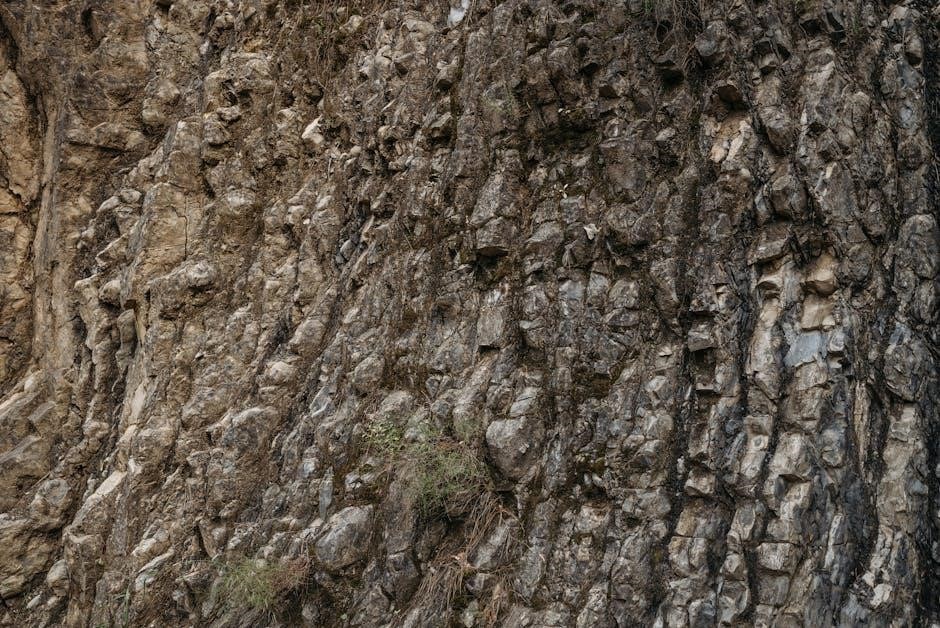
Sharpening Stones vs. Other Sharpening Tools
Sharpening stones offer precise control and versatility compared to electric sharpeners or diamond stones‚ making them ideal for both beginners and professionals seeking consistent‚ high-quality results.
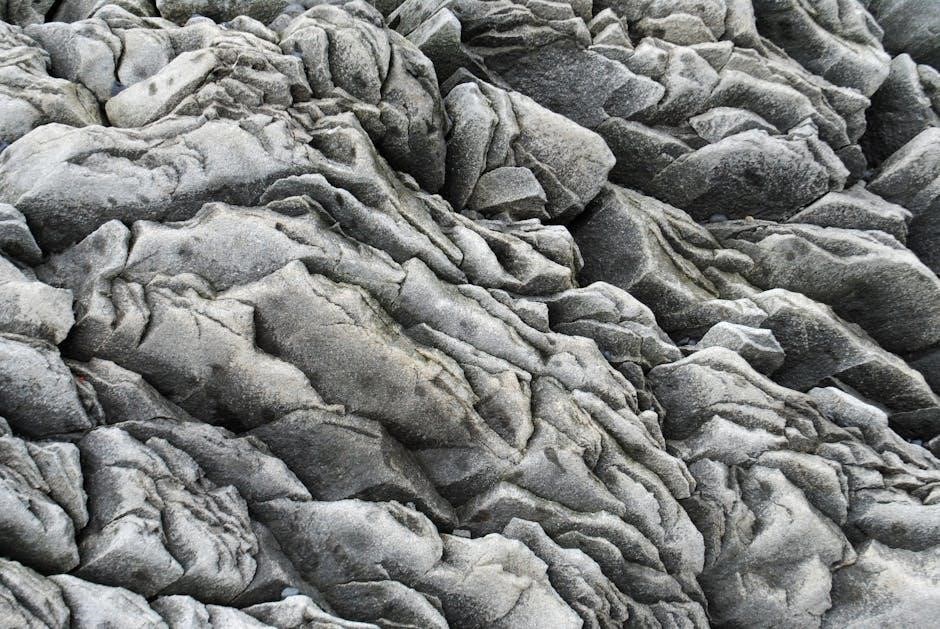
Comparison with Diamond Stones
Diamond stones are known for their durability and fast cutting action‚ often preferred for heavy-duty sharpening. They are typically more aggressive than traditional sharpening stones‚ making them ideal for repairing damaged edges or sharpening hard steels; However‚ diamond stones can be more expensive and may wear out faster with frequent use. Unlike sharpening stones‚ diamond stones require less maintenance‚ as they are less prone to flattening. While sharpening stones offer a more traditional‚ precise sharpening experience‚ diamond stones are favored for their speed and efficiency‚ especially among professionals. Both tools have their place‚ depending on the user’s needs and preferences.
Comparison with Electric Sharpeners
Electric sharpeners offer convenience and speed‚ making them ideal for quick touch-ups. They often feature preset angles and multiple stages‚ catering to users seeking consistency without manual effort. However‚ electric sharpeners can generate excessive heat‚ potentially damaging blade steel. They are less versatile for different knife types and may lack the precision of sharpening stones. In contrast‚ sharpening stones provide greater control over the sharpening process‚ allowing for customized edge refinement. While electric sharpeners are user-friendly‚ they are less portable and require maintenance like replacing worn stages. Sharpening stones remain a preferred choice for enthusiasts and professionals who value precision and traditional craftsmanship.
Comparison with Ceramic Hones
Ceramic hones are harder and more brittle than sharpening stones‚ making them ideal for fine polishing and maintenance. They are often used for straight-edge razors and high-carbon steel knives due to their ability to create a precise‚ sharp edge. Unlike sharpening stones‚ ceramic hones do not require flattening and are less prone to wear. However‚ they are less versatile for heavy sharpening tasks and can be more expensive. While they excel at refining edges‚ they lack the adaptability of sharpening stones for various blade types. The choice between the two depends on the user’s preference for durability versus versatility‚ as well as the specific needs of the knife being sharpened.
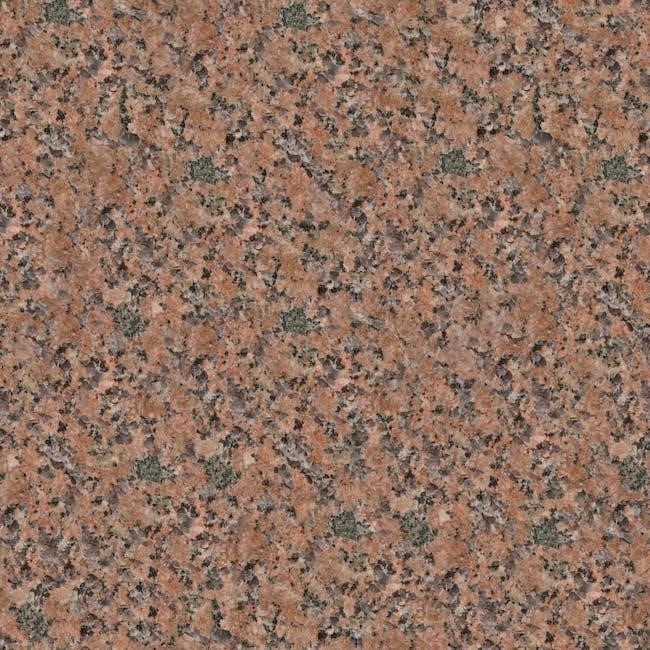
Sharpening Techniques Using Different Grits
Sharpening techniques vary with grit levels. Coarse grits shape blades‚ medium grits refine edges‚ and fine grits polish for sharpness. Each step ensures precise edge development and durability.
Basic Sharpening Technique for Beginners
For beginners‚ start with a coarse grit stone to establish the knife’s edge. Soak the stone in water for 10-15 minutes. Hold the knife at a 20-degree angle and draw it across the stone‚ moving from heel to tip. Repeat on the other side‚ maintaining consistent pressure. Check for a burr‚ a sign the edge is sharpening. Switch to a finer grit stone to polish the edge‚ improving sharpness and reducing roughness. Keep strokes light and controlled‚ ensuring even wear. Regular practice will build confidence and skill in sharpening effectively with different grits. Patience is key to achieving a razor-sharp edge.
Advanced Sharpening Techniques for Consistent Results
For consistent results‚ advanced sharpening involves precise angle control and pressure modulation. Start by maintaining a consistent 20-degree angle‚ using a marker to visualize the edge. Apply controlled pressure‚ increasing gradually as you progress through finer grits. Use light strokes on higher grits to refine the edge without over-sharpening. Advanced techniques include creating micro-bevels for durability and employing alternating strokes to ensure even wear. Refine the edge by drawing the knife backward across the stone to polish the bevel. Practice these methods to master the art of sharpening‚ achieving professional-level sharpness with ease and precision.
Sharpening Specific Types of Knives
Sharpening specific types of knives requires tailored techniques. For straight-edge knives‚ use a consistent 20-degree angle and progress through grits. Serrated knives need gentle strokes to maintain tooth edges without damaging them. Pocket knives benefit from quick touch-ups on medium grit for convenience. Chef knives require precise edge refinement on fine grits for culinary precision. Fillet knives‚ with their curved blades‚ should be sharpened with controlled‚ sweeping motions to maintain flexibility. Always match the sharpening technique to the knife’s intended use for optimal results. This ensures each blade performs at its best‚ whether in the kitchen‚ outdoors‚ or for everyday use.
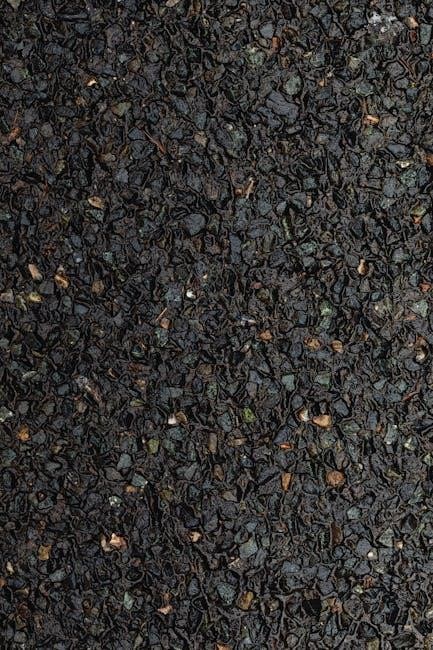
Safety Tips for Using Sharpening Stones
Always handle blades with care‚ keeping fingers away from edges. Use a sharpening stone on a stable surface and maintain light‚ controlled pressure to avoid accidents.
Proper Handling of Blades
Proper handling of blades is crucial for safety and effective sharpening. Always grasp the knife firmly but carefully‚ ensuring your fingers are away from the cutting edge. Use a consistent angle and apply gentle pressure when sharpening. Avoid touching the blade excessively‚ as oils from your skin can interfere with the sharpening process. Keep your workspace clean and well-lit to maintain visibility. Never sharpen a blade when it’s wet or slippery‚ as this increases the risk of accidents. Always cut away from your body and keep children and pets away while sharpening. By following these guidelines‚ you ensure a safe and efficient sharpening experience.
Using a Sharpening Stone Safely
Using a sharpening stone safely involves several key precautions. Always place the stone on a stable‚ flat surface to prevent it from moving during use. Wet stones should be submerged for the recommended time to ensure proper lubrication. Keep your hands and fingers away from the sharpening area to avoid cuts. Use a sharpening steel or other protective device if necessary. Never sharpen towards your body‚ as this can lead to serious injury. Ensure the stone is clean and free of debris before use. Regularly inspect the stone for wear and tear. Proper safety practices not only protect you but also maintain the effectiveness of the sharpening process.
Avoiding Accidents While Sharpening
Avoiding accidents while sharpening requires attention to safety practices. Always maintain a stable and flat surface for the sharpening stone to prevent it from slipping. Keep your fingers and hands away from the sharpening edge‚ using a sharpening steel or other protective device if needed. Ensure the workspace is clean and free of distractions. Never apply excessive pressure‚ as this can lead to loss of control. Stay focused and avoid rushing the process. Proper lighting is essential to clearly see the blade’s edge. Regularly inspect the stone for wear and tear. By following these guidelines‚ you can minimize risks and ensure a safe sharpening experience.
Understanding sharpening stone grit is key to achieving razor-sharp edges. With proper techniques and patience‚ anyone can master sharpening‚ ensuring tools stay in peak condition for years.
Final Thoughts on Sharpening Stone Grit
Encouragement to Practice and Experiment
Sharpening is a skill that improves with practice. Experimenting with different grits and techniques helps refine your approach. Start with coarse grits to understand blade transformation‚ then gradually progress to finer grits for precision. Don’t be discouraged by initial challenges; each attempt brings you closer to mastery. Try sharpening various tools to build versatility. Keep a journal of your progress to track improvements. Remember‚ sharpening is both functional and rewarding. Embrace the process‚ and soon you’ll achieve professional-level sharpness. The journey to becoming a skilled sharpener is as fulfilling as the results.
